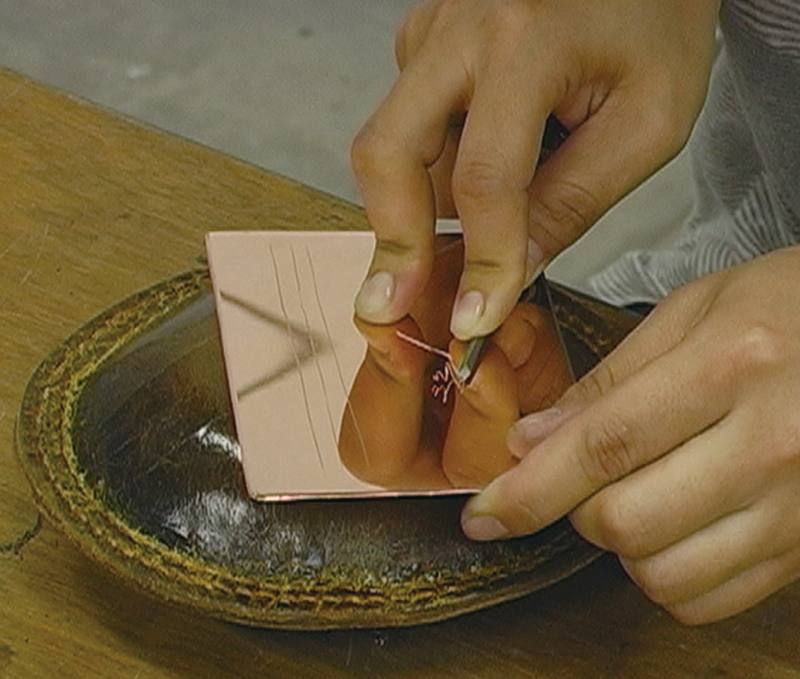Engraving
エングレーヴィング
Engraving
Engraving is a type of direct intaglio technique (direct carving method) in which a metal plate is carved out directly to create a drawing. A tool called a burin is used to score lines (the image) directly on the printing plate. A feature of this technique is that it enables sharp lines to be produced through printing.
Engraving is the oldest of the many intaglio techniques and originated in Europe in the 15th century from the techniques of goldsmiths who engraved decorative patterns on armor and precious metal. It is thought that this printing method began when the goldsmiths packed ink in the grooves and printed them on a press to keep records of the patterns.
The engraving tool, the burin, is a carving blade consisting of a steel shaft, a cutting tip shaped diagonally at 45 degrees and a wooden handle. The sharp cutting tip of a burin produces lines with a V-shaped cross section on the plate. The burin is held with the palm wrapped around the wooden handle, the thumb and index finger gently holding the cutting tip, and the remaining fingers supporting the shaft. It is used by pushing with the palm while keeping the cutting tip almost level with the plate. The width and depth of the lines can be adjusted by the amount of pressure applied. To carve long curved lines, the hand holding the burin should be kept still while the plate is rotated. When doing this, a round leather cushion (coussin) filled with sand can be placed under the plate so that it can easily be rotated. The burin leaves behind a small amount of shavings known as burrs on both sides of the carved lines. These must be removed carefully with a scraper. If necessary, the plate can be polished with a burnisher. Engraved plates do not produce smudged effects like those created by burrs in drypoint printing, nor do they crumble due to corrosion as is the case in etching. Consequently, the lines that are printed leave a cold and clear impression. Also, the lines are narrower at the start and end, and wider towards the middle.
In the past, steel plates (steel engraving) were used in printing illustrations for books but nowadays, copper plates are more common. A technique has also been developed for producing an image from dots carved out using a special burin, and this is known as stipple engraving. Expert skills are required to portray fine details through hatching, as seen in works by Dürer and other printmakers. Prints made using this method are difficult to forge so this technique is presently utilized for printing bank notes and bills.


